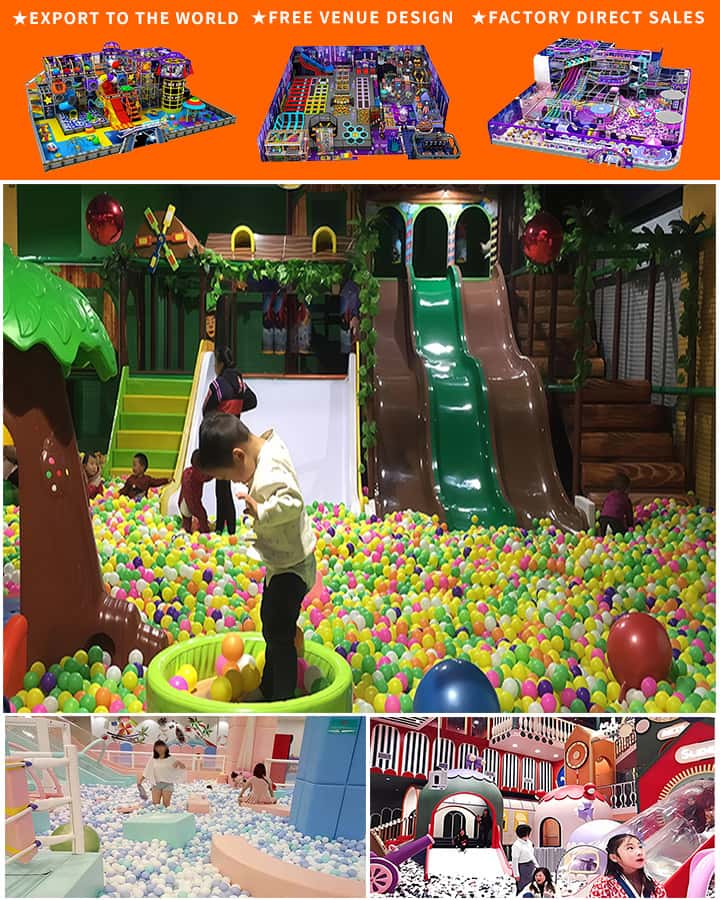Designing an indoor playground for preschoolers is a unique challenge that requires creativity, safety, and educational value. The ideal indoor playground should be engaging, stimulating, and safe to ensure that children have fun while developing essential skills. Here are several innovative design ideas for indoor playground equipment tailored specifically for preschoolers:
1. Sensory Play Areas
Preschoolers are in the critical phase of sensory development. Incorporating sensory play areas can significantly enhance their cognitive and motor skills. These areas could include textured walls with different materials like sandpaper, silk, or foam for tactile exploration, as well as interactive elements such as water tables, light tables, and sound-producing toys.
2. Climbing Structures
Climbing structures are excellent for physical development and building gross motor skills. Consider incorporating low-height climbing walls or small bouldering features with soft mats underneath to ensure safety. Adding tunnels, bridges, and ropes can also create an adventure-like environment that encourages exploration and physical activity.
3. Educational Panels
Incorporate educational panels into the playground design to make learning fun. These interactive panels can feature alphabets, numbers, shapes, colors, and simple math problems. Children can engage with these panels through touch screens or movable pieces that provide instant feedback, making learning an enjoyable part of their playtime.

4. Soft Play Areas
Safety is paramount when designing indoor playgrounds for preschoolers. Soft play areas filled with foam blocks, cushioned flooring, and inflatable structures allow children to explore and play without the risk of serious injury. Integrate various shapes and sizes to create an intriguing landscape that stimulates imagination and creativity.
5. Role Play Zones
Role play is an integral part of a child’s development as it helps them understand the world around them. Designated zones for different roles—such as a mini market, doctor’s clinic, or post office—can help children act out real-life scenarios. Provide costumes and props to enhance the experience and boost their social interaction skills.
6. Physical Fitness Challenges
Incorporating elements that promote physical fitness can make the playground both fun and beneficial. Features like balance beams, small trampolines, and obstacle courses tailored to preschoolers’ height and abilities can help develop their coordination, balance, and strength. Ensure all equipment is age-appropriate and securely anchored to prevent accidents.
7. Creative Corners
A dedicated creative corner featuring art supplies, building blocks, and craft materials can encourage imaginative play and fine motor skill development. Tables with built-in storage for crayons, markers, glue, and paper can keep the area organized while allowing easy access to materials for spontaneous creative sessions.
8. Nature-Inspired Elements
Bringing elements of nature indoors can create a calming and enriching environment. Consider using natural materials like wood and stone for parts of the playground design. Incorporate planters with non-toxic plants that are safe for indoor environments, providing a touch of greenery and an opportunity for children to learn about nature.
9. Quiet Reading Nooks
While physical activity is crucial, quiet time is equally important for balanced development. Create cozy reading nooks with comfortable seating, soft lighting, and a selection of age-appropriate books. This will offer preschoolers a peaceful retreat where they can enjoy stories and develop early literacy skills.
10. Interactive Installation Art
Combining art and play can result in unique and engaging experiences. Large-scale interactive installations, such as murals that children can color in or digital screens responding to touch, can captivate preschoolers’ attention while stimulating their creativity and curiosity.
Final Thoughts
Designing an indoor playground for preschoolers involves thoughtful consideration of their developmental needs, safety, and overall enjoyment. By integrating sensory play areas, climbing structures, educational elements, soft play zones, role play areas, physical fitness challenges, creative corners, nature-inspired designs, quiet reading nooks, and interactive art installations, you can create a dynamic and enriching environment where young children thrive both physically and cognitively.
Incorporating these ideas will not only make the indoor playground a delightful space for preschoolers but also a foundational setting where they can learn, grow, and create unforgettable memories.




